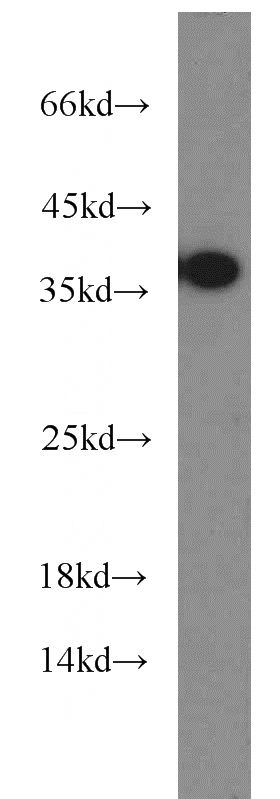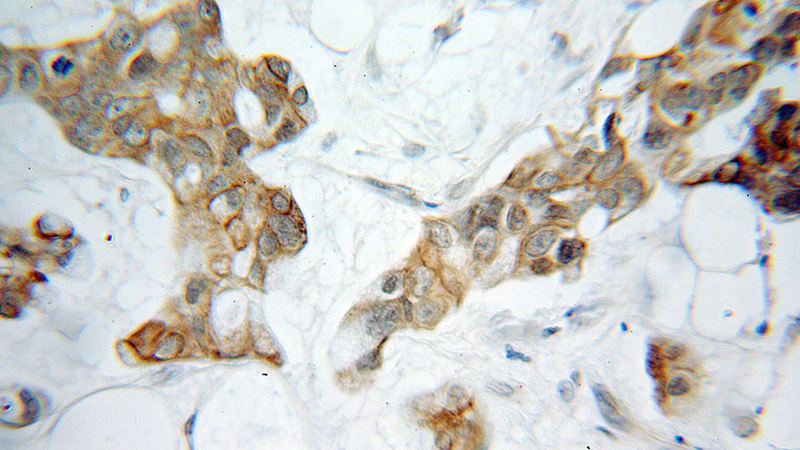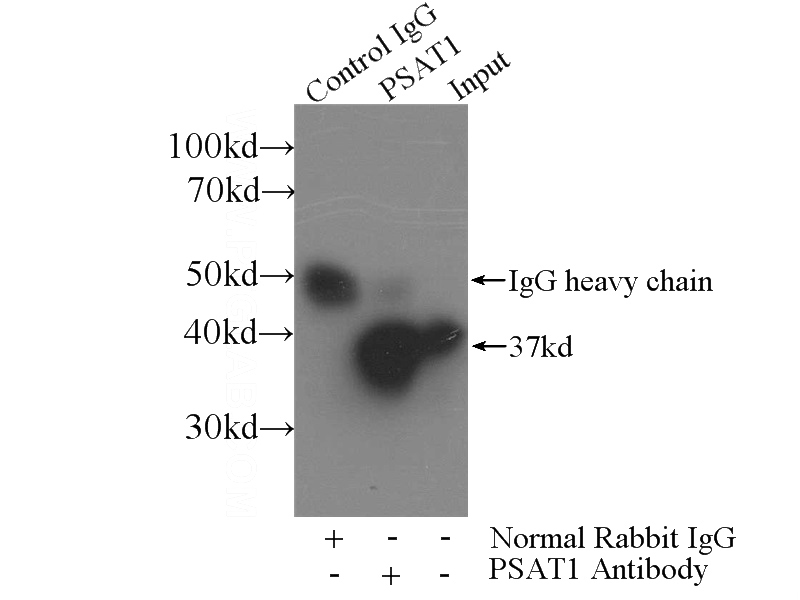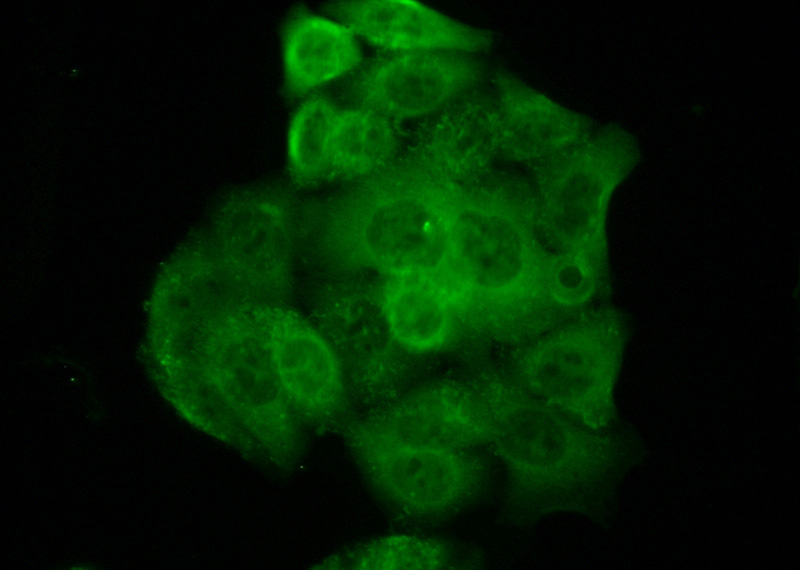-
Product Name
PSAT1 antibody
- Documents
-
Description
PSAT1 Rabbit Polyclonal antibody. Positive IHC detected in human pancreas cancer tissue, human colon cancer tissue. Positive IF detected in HepG2 cells. Positive IP detected in HeLa cells. Positive WB detected in HepG2 cells, HEK-293 cells, HeLa cells, rat brain tissue. Observed molecular weight by Western-blot: 37-40 kDa
-
Tested applications
ELISA, IHC, WB, IP, IF
-
Species reactivity
Human, Rat; other species not tested.
-
Alternative names
EPIP antibody; Phosphoserine aminotransferase antibody; PSA antibody; PSAT antibody; PSAT1 antibody
-
Isotype
Rabbit IgG
-
Preparation
This antibody was obtained by immunization of PSAT1 recombinant protein (Accession Number: NM_058179). Purification method: Antigen affinity purified.
-
Clonality
Polyclonal
-
Formulation
PBS with 0.1% sodium azide and 50% glycerol pH 7.3.
-
Storage instructions
Store at -20℃. DO NOT ALIQUOT
-
Applications
Recommended Dilution:
WB: 1:200-1:2000
IP: 1:200-1:1000
IHC: 1:10-1:100
IF: 1:20-1:200
-
Validations

HepG2 cells were subjected to SDS PAGE followed by western blot with Catalog No:114294(PSAT1 antibody) at dilution of 1:600

Immunohistochemical of paraffin-embedded human pancreas cancer using Catalog No:114294(PSAT1 antibody) at dilution of 1:10 (under 10x lens)

IP Result of anti-PSAT1 (IP:Catalog No:114294, 3ug; Detection:Catalog No:114294 1:300) with HeLa cells lysate 2480ug.

Immunofluorescent analysis of HepG2 cells using Catalog No:114294(PSAT1 Antibody) at dilution of 1:50 and Alexa Fluor 488-congugated AffiniPure Goat Anti-Rabbit IgG(H+L)
-
Background
PSAT1, also named as PSA and PSAT, belongs to the class-V pyridoxal-phosphate-dependent aminotransferase family and SerC subfamily. It Catalyzes the reversible conversion of 3-phosphohydroxypyruvate to phosphoserine and of 3-hydroxy-2-oxo-4-phosphonooxybutanoate to phosphohydroxythreonine. PSAT1 represents a new interesting target for CRC therapy. (PMID:18221502) It may be implicated in altered serine metabolism and schizophrenia spectrum conditions. (PMID:20955740 )
-
References
- Toyama A, Suzuki A, Shimada T. Proteomic characterization of ovarian cancers identifying annexin-A4, phosphoserine aminotransferase, cellular retinoic acid-binding protein 2, and serpin B5 as histology-specific biomarkers. Cancer science. 103(4):747-55. 2012.
- Sun L, Song L, Wan Q. cMyc-mediated activation of serine biosynthesis pathway is critical for cancer progression under nutrient deprivation conditions. Cell research. 25(4):429-44. 2015.
- Yan S, Jiang H, Fang S. MicroRNA-340 Inhibits Esophageal Cancer Cell Growth and Invasion by Targeting Phosphoserine Aminotransferase 1. Cellular physiology and biochemistry : international journal of experimental cellular physiology, biochemistry, and pharmacology. 37(1):375-86. 2015.
Related Products / Services
Please note: All products are "FOR RESEARCH USE ONLY AND ARE NOT INTENDED FOR DIAGNOSTIC OR THERAPEUTIC USE"
